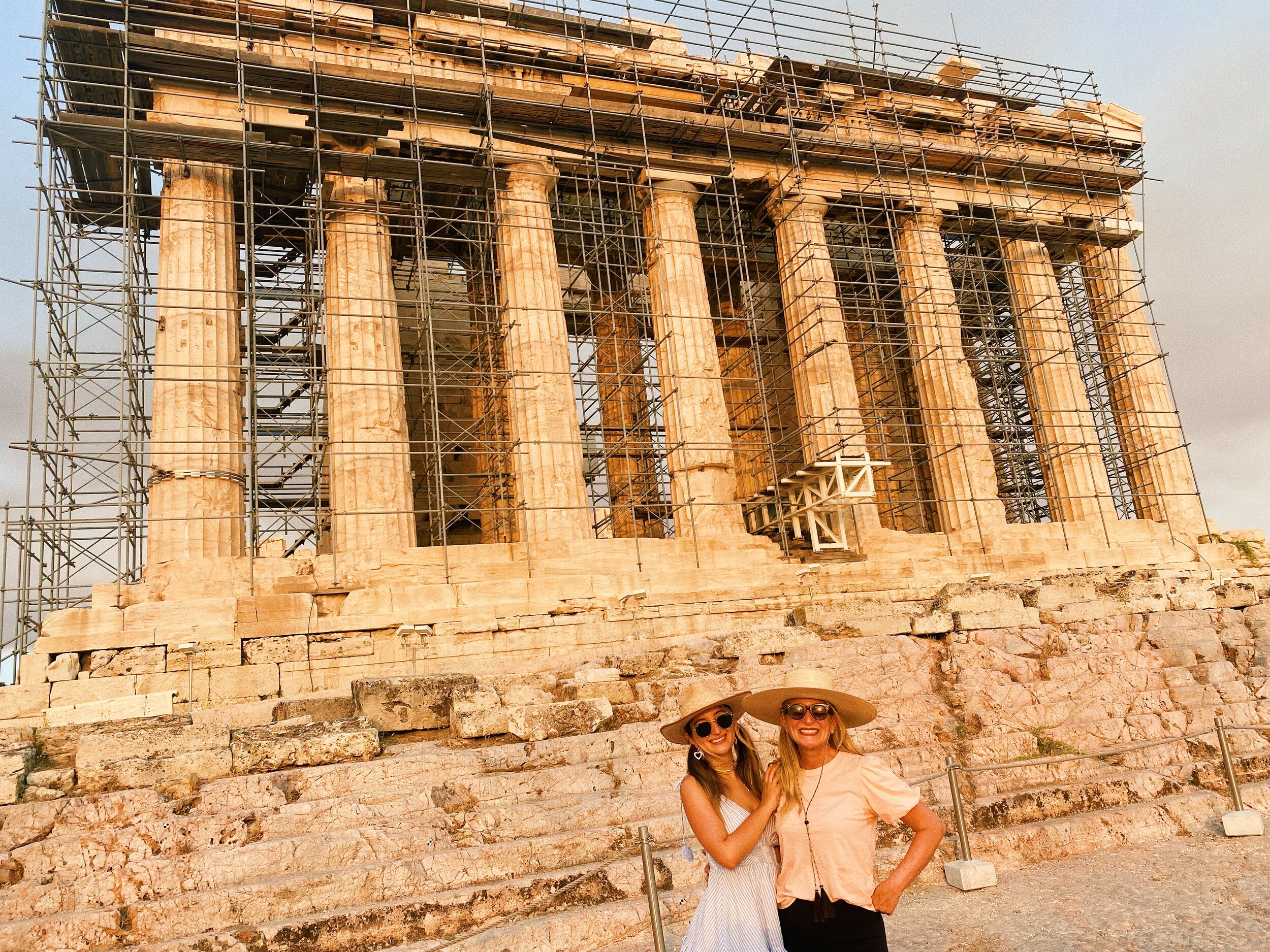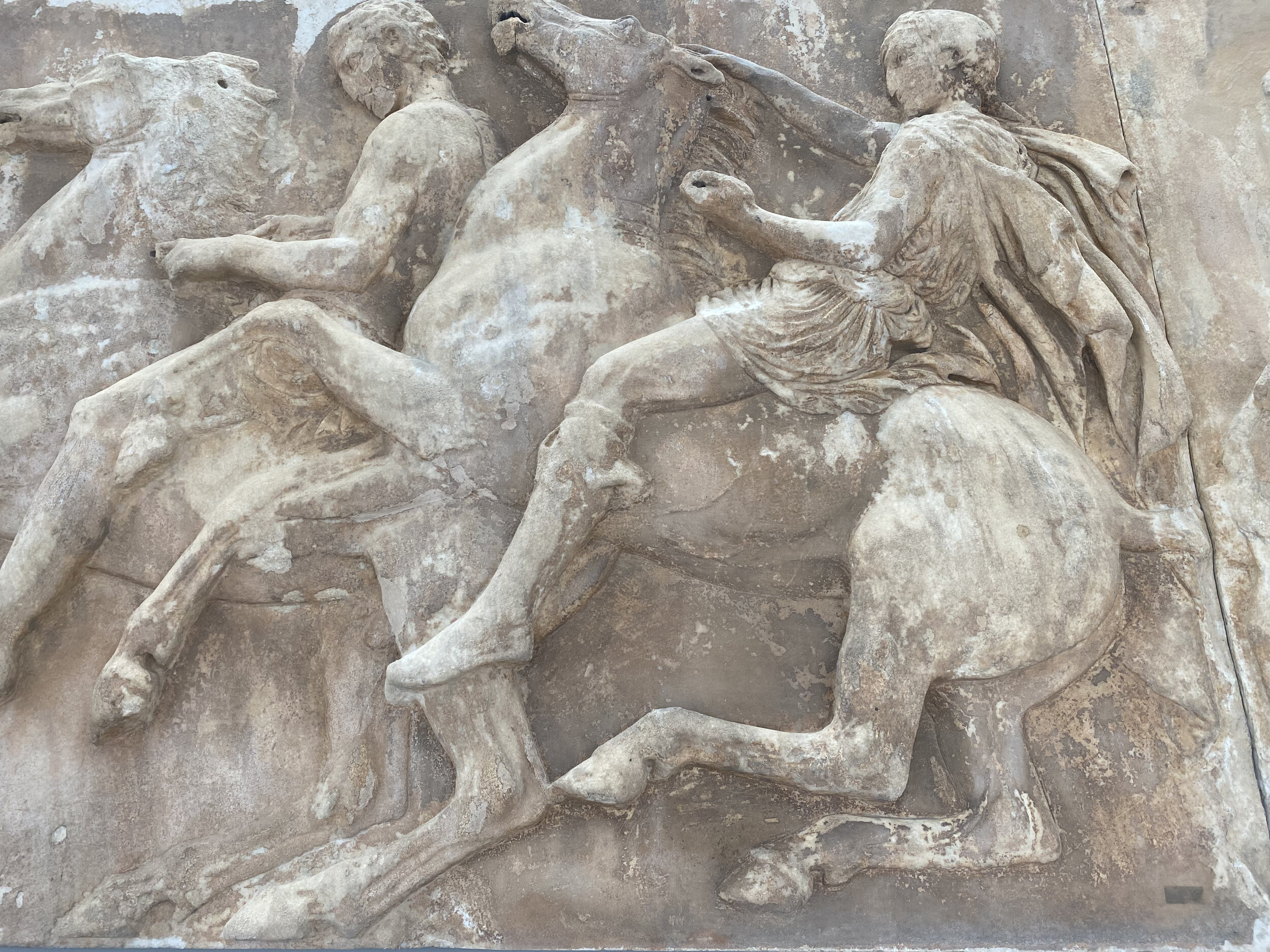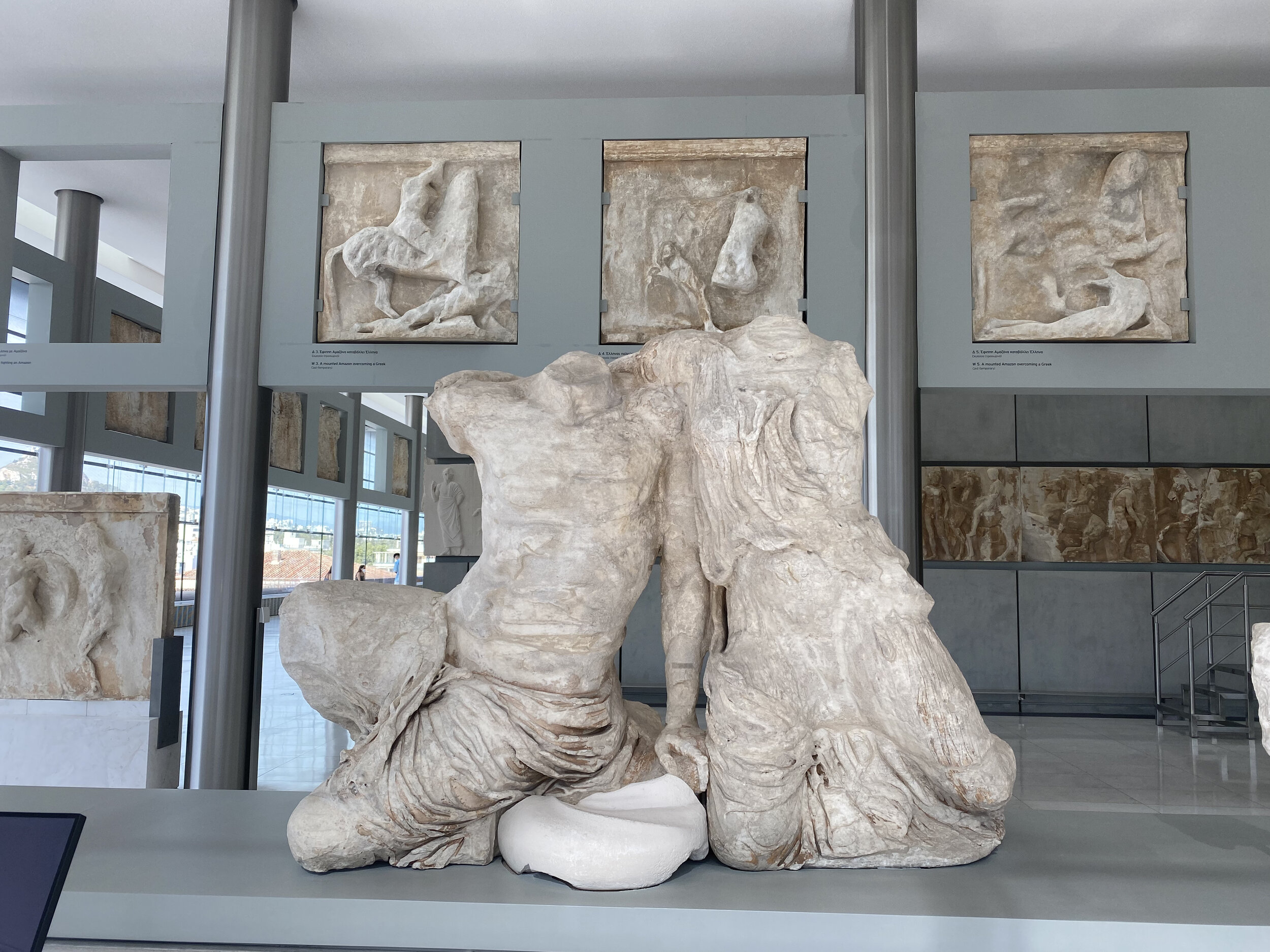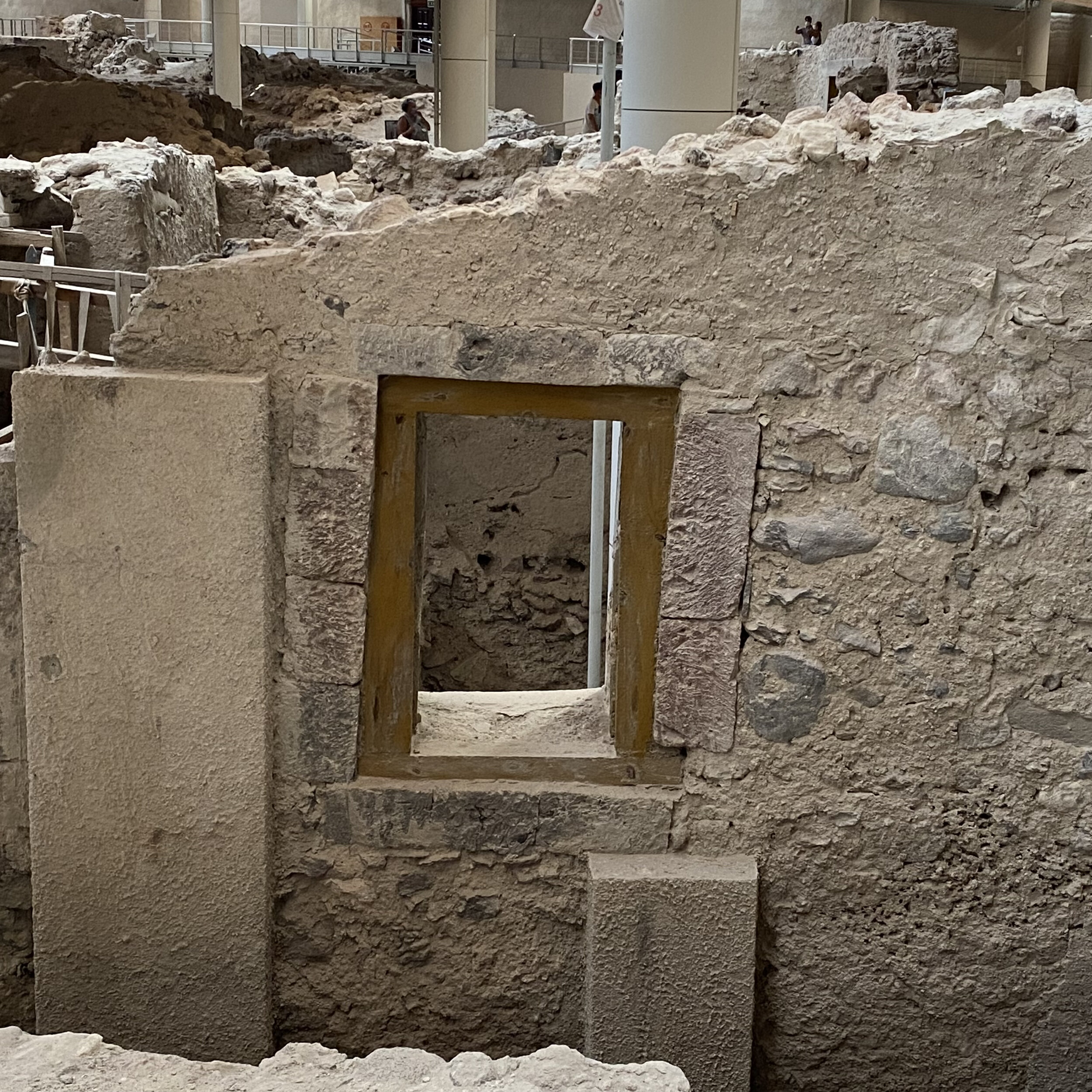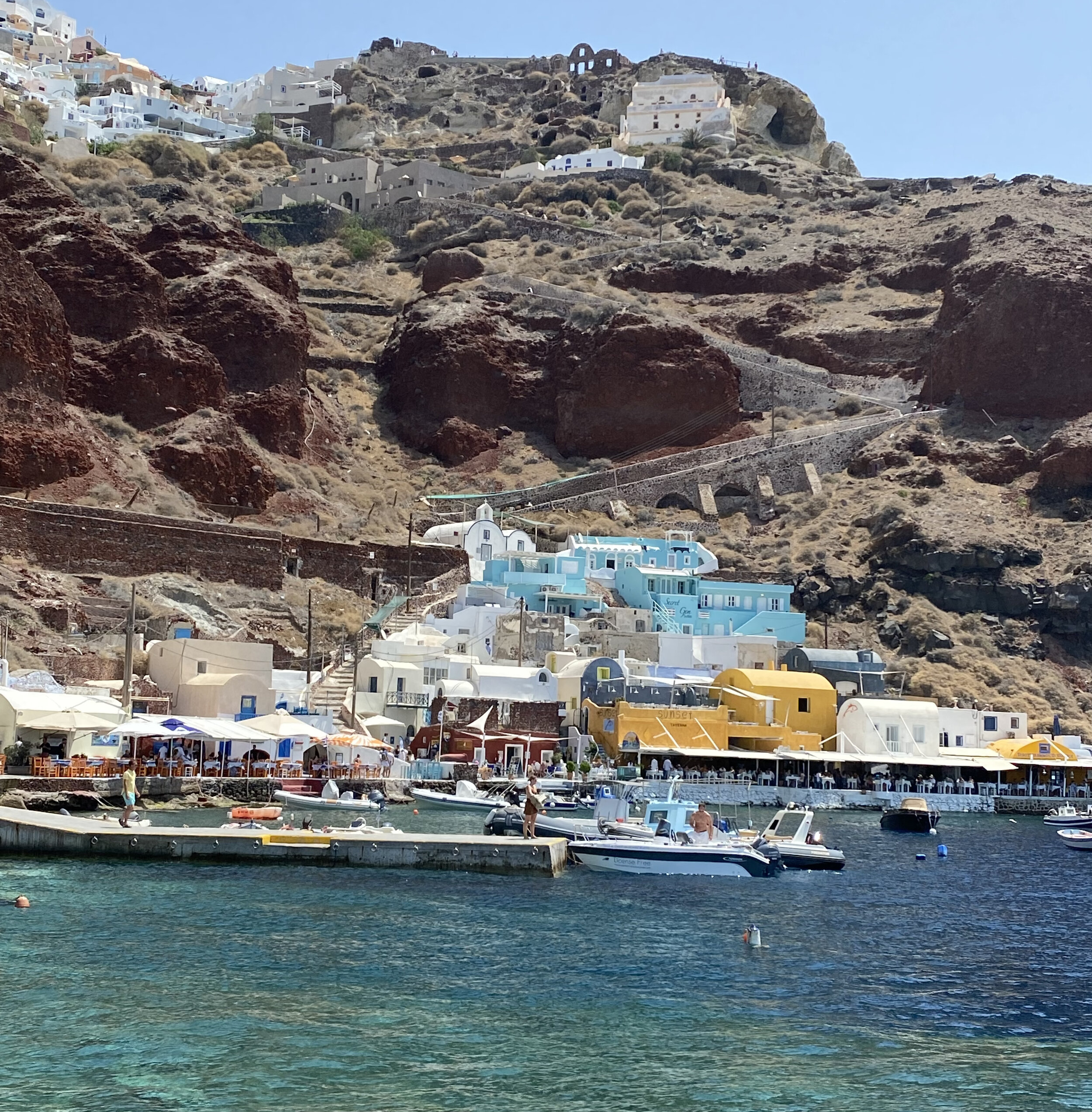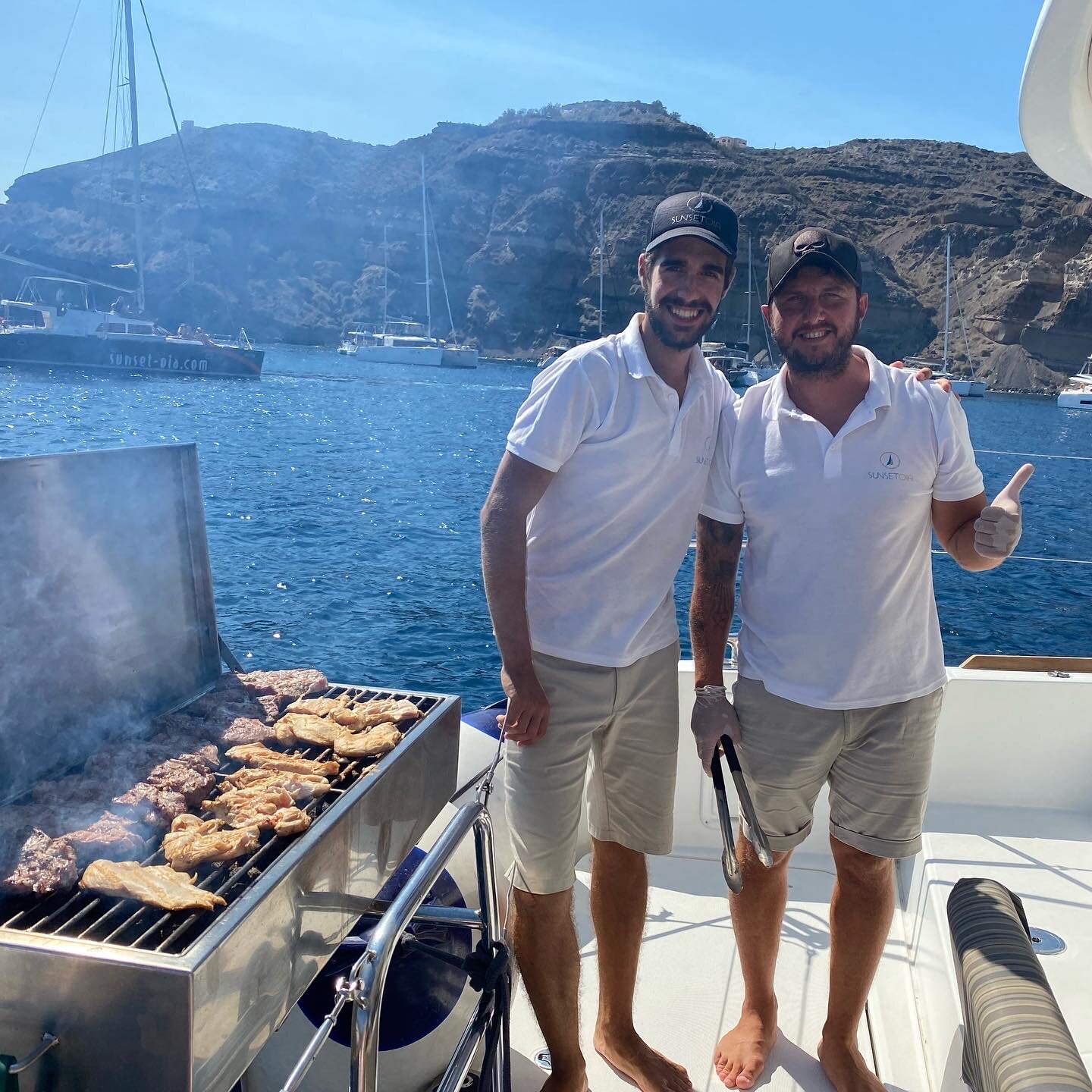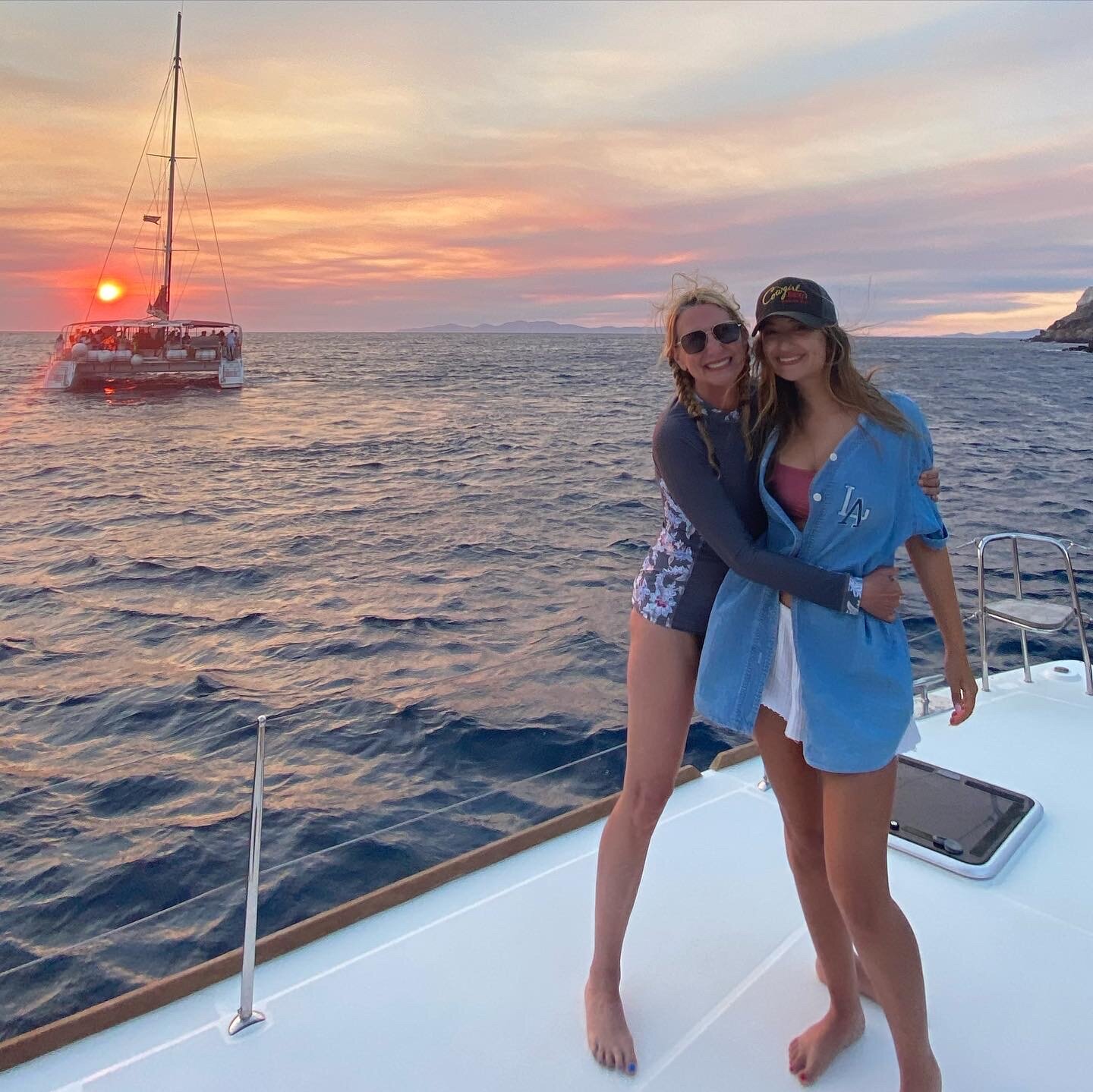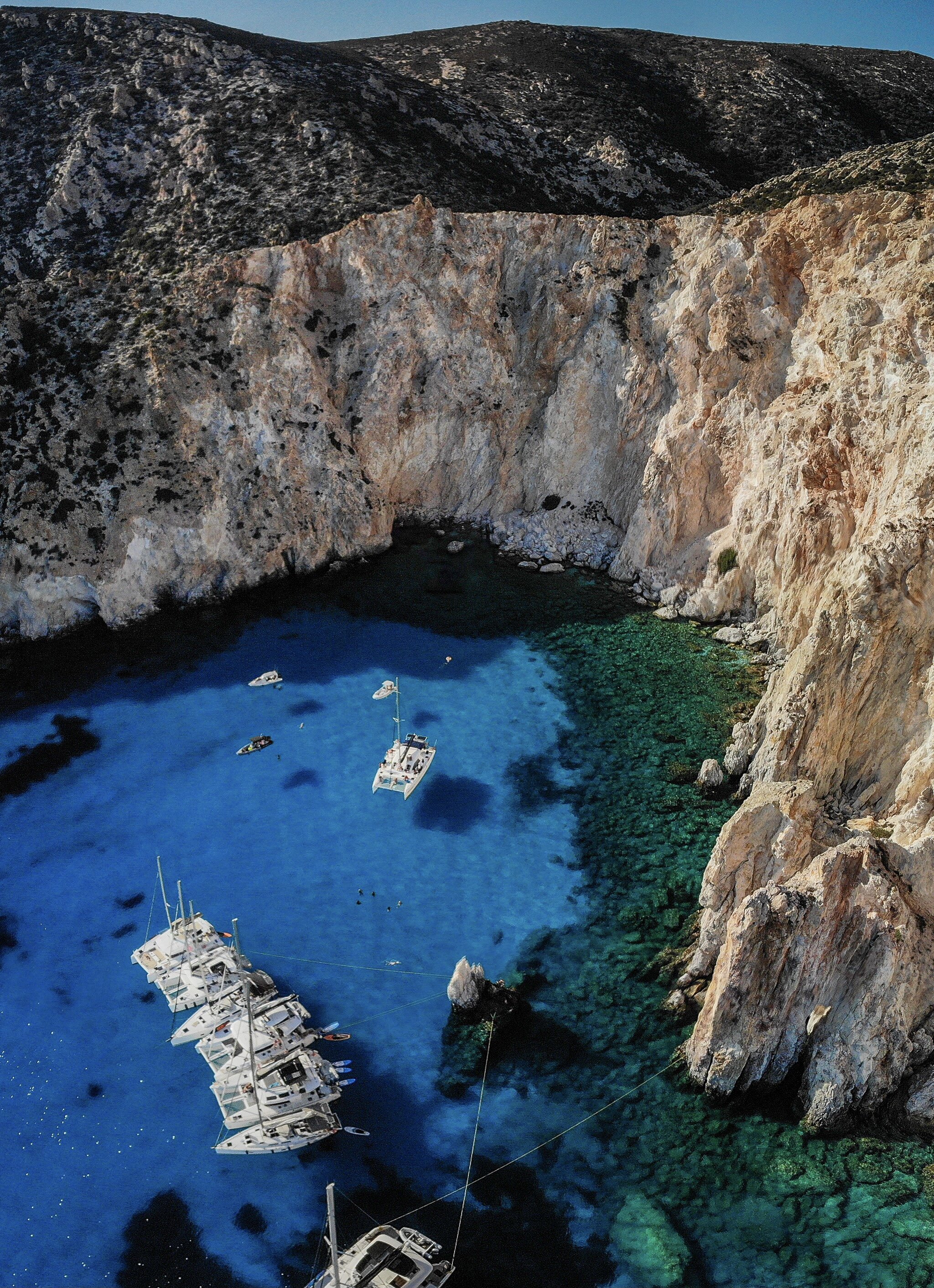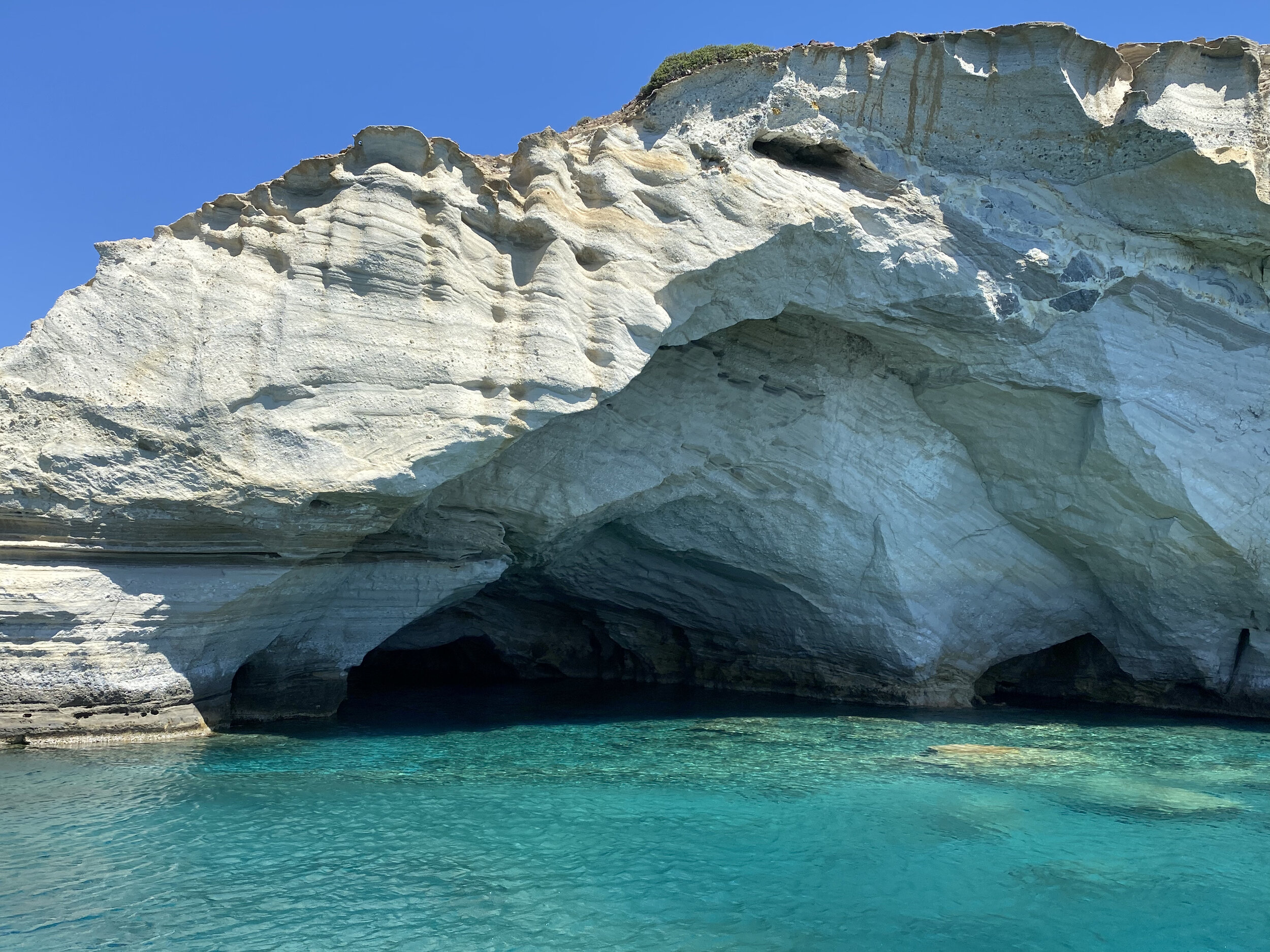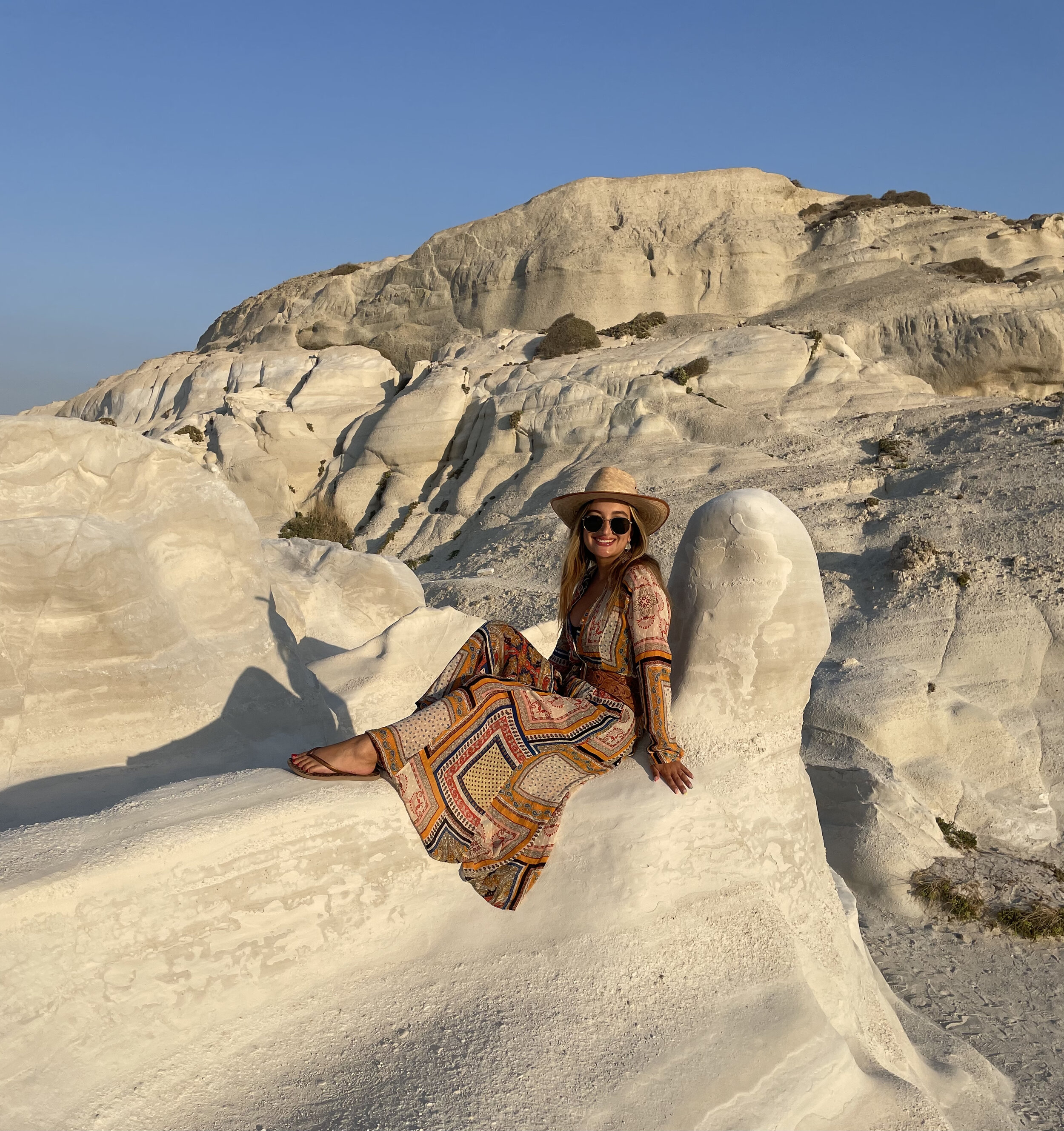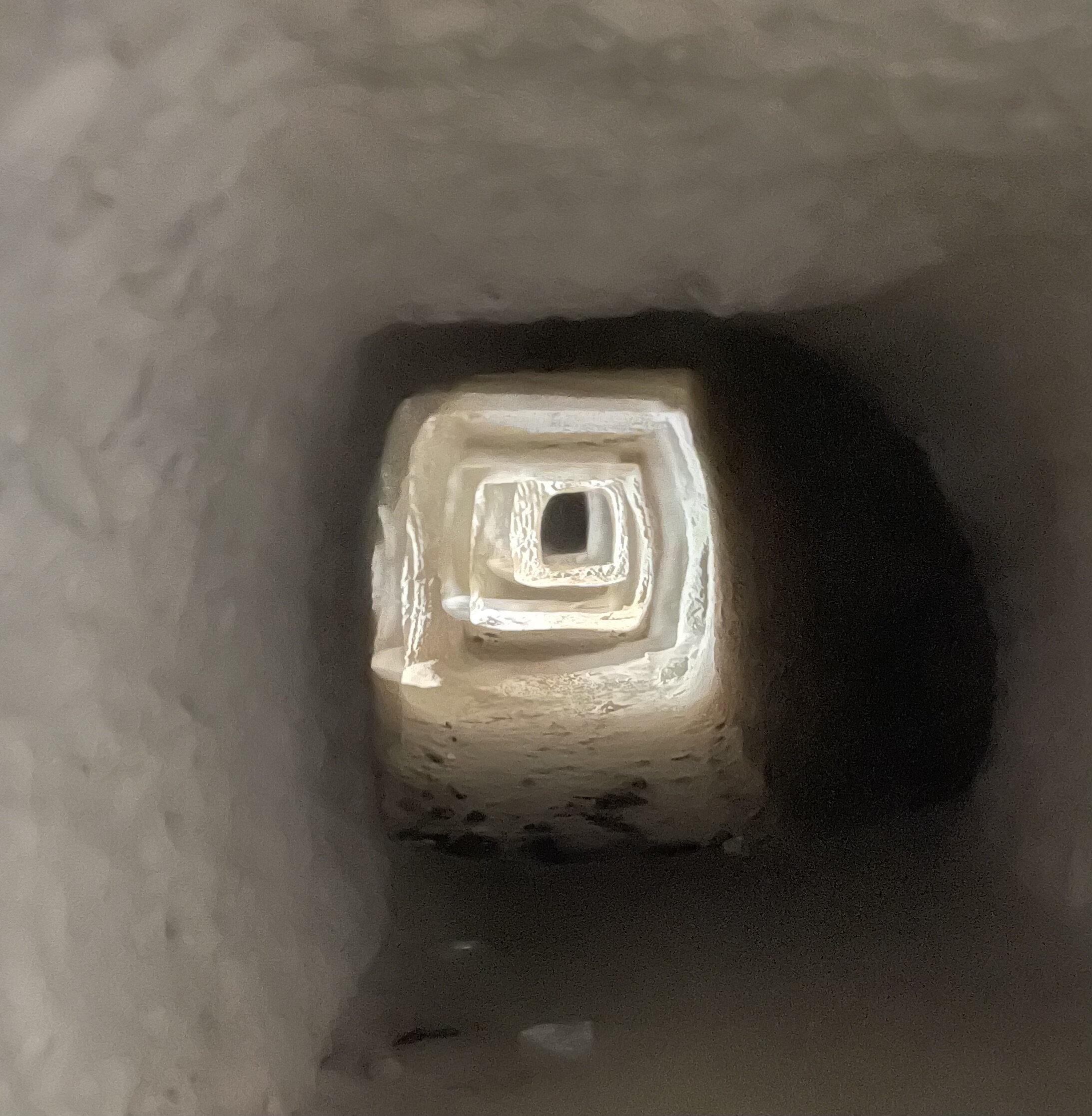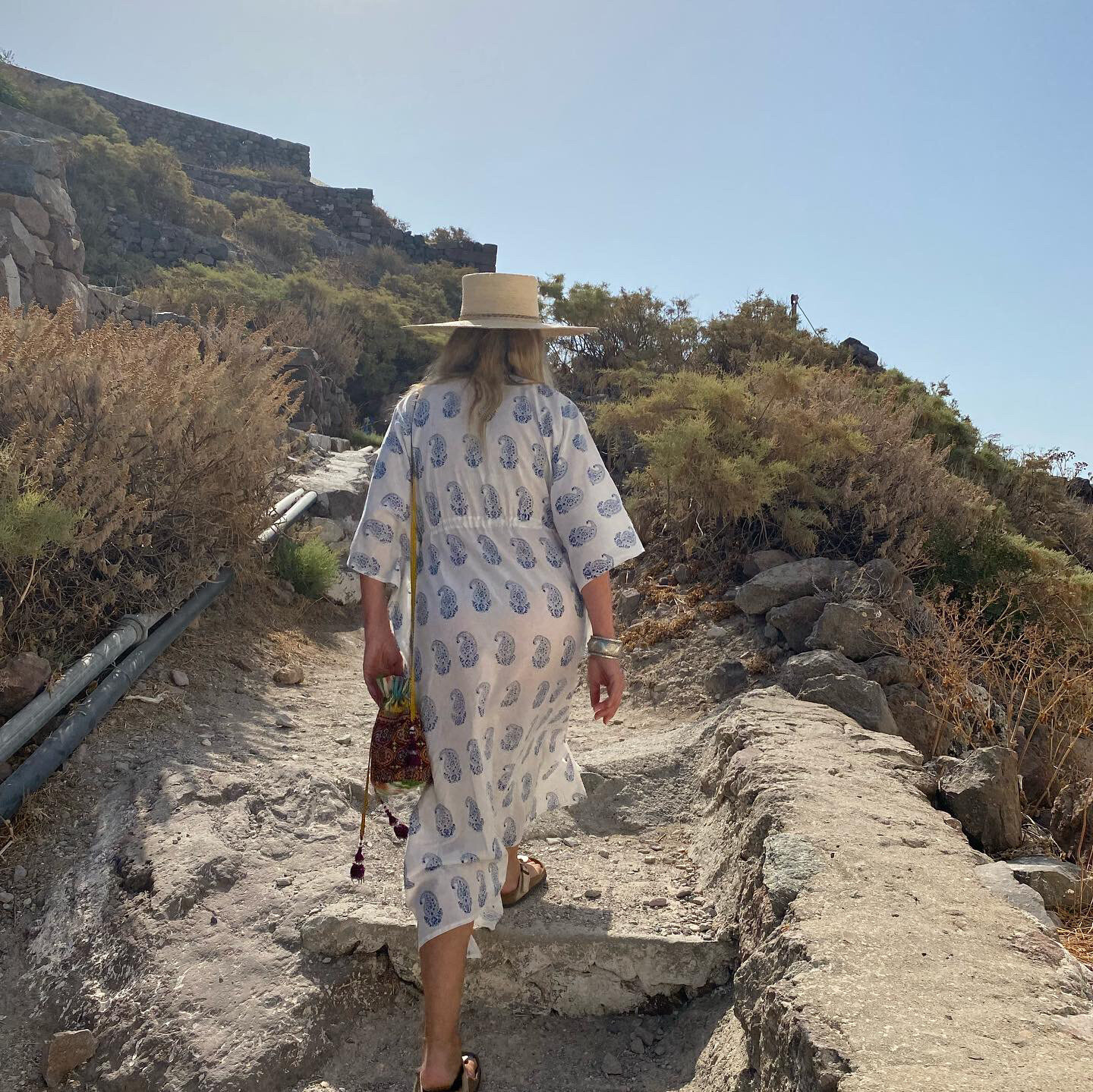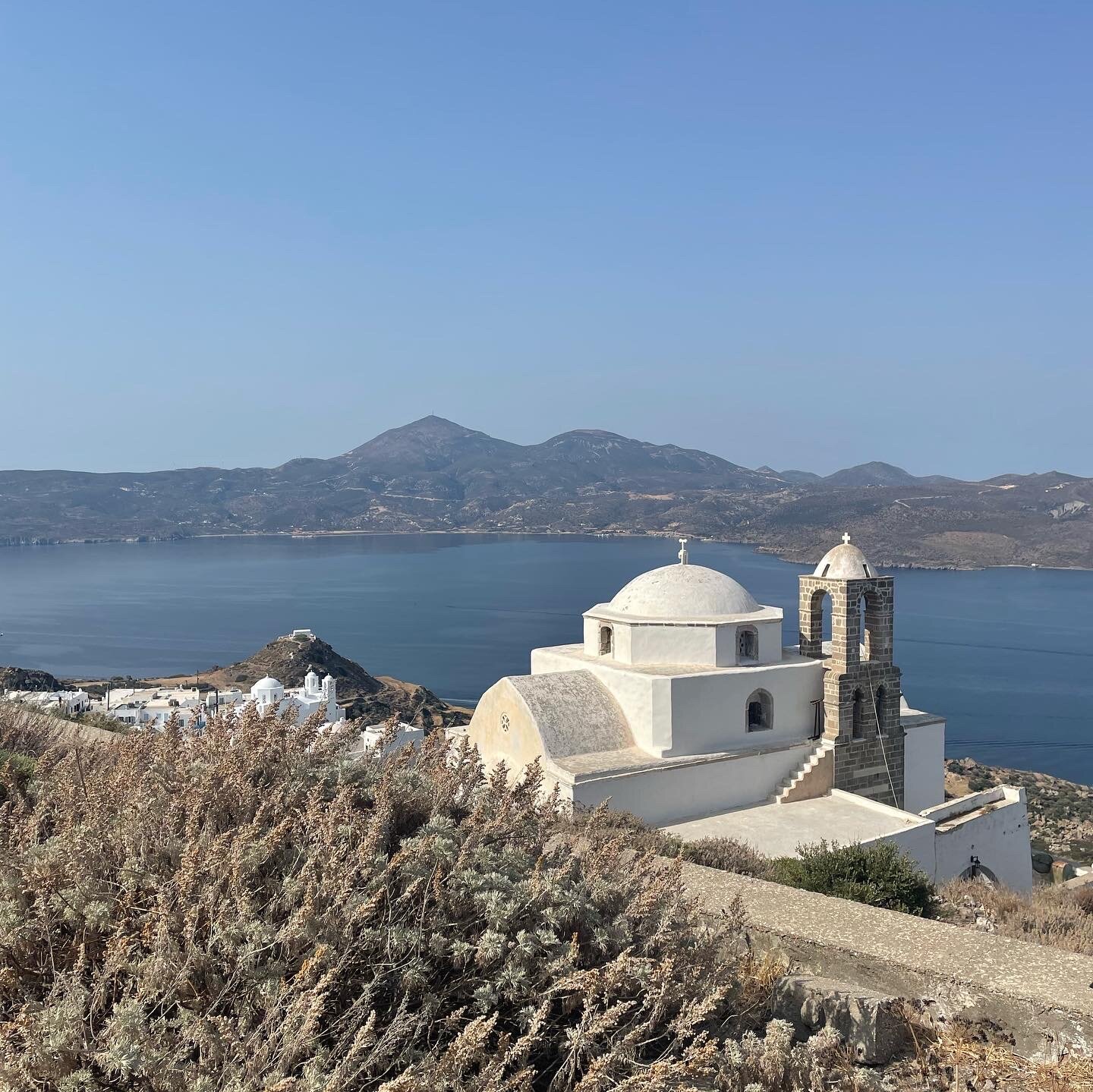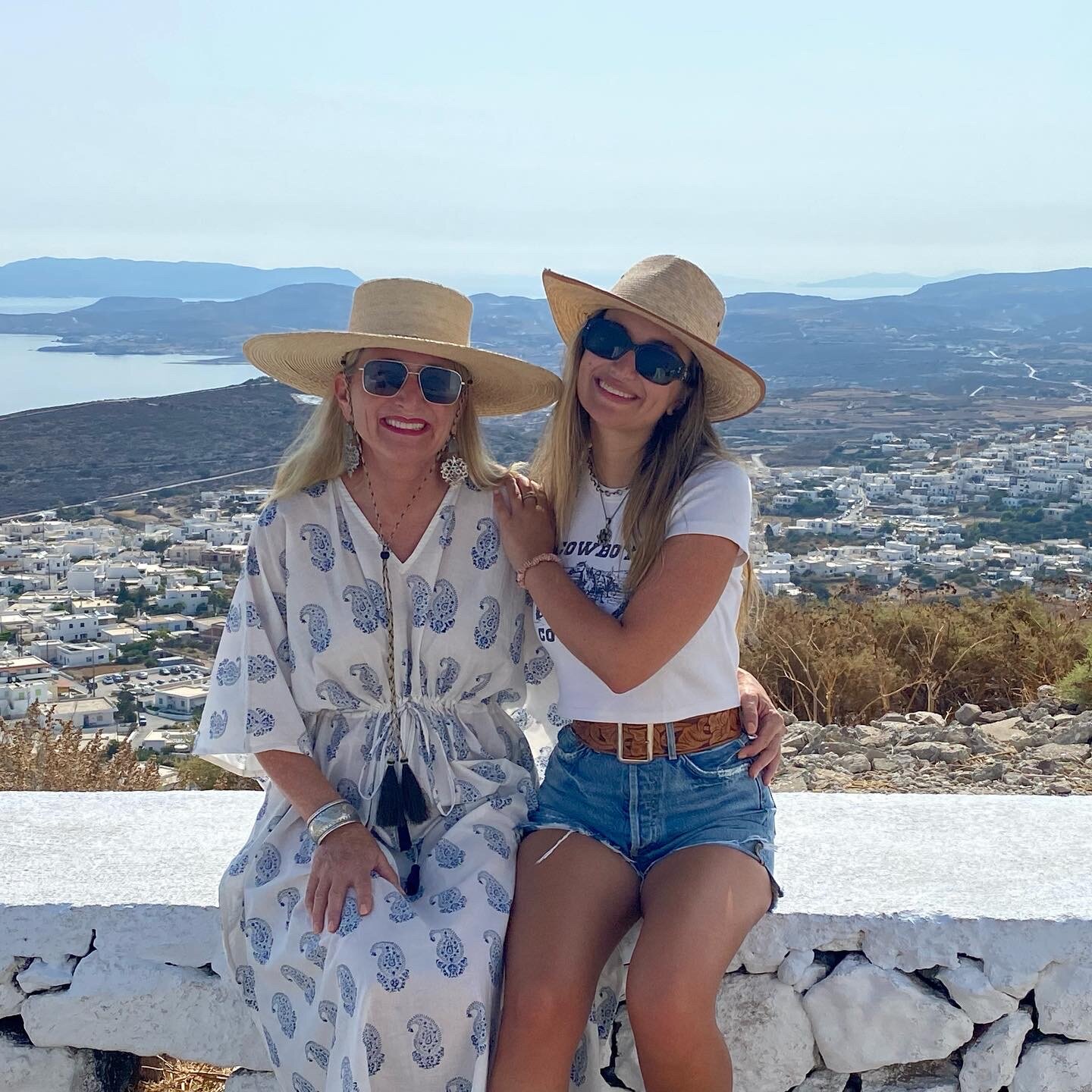The Best of Greece: Athens, Santorini and Milos
Sunset at the Acropolis
PART ONE: ATHENS
The King George Hotel and its next door neighbor The Grand Bretagne are gleaming monuments to the best of modern Greek architecture and opulence. White marble floors and elegant furnishings are as polished and pretty as the fashionable Greek women who lunch at Grand Bretagne’s open-air rooftop restaurant. This is where Roxy and I take in stunning views of the Acropolis alongside our first Athenian meal of Greek salad and seabass.
We planned our entire vacation using the travel site trip.me. Antonis, our Greek expert on the ground, took care of every detail including transfers, connecting flights, and ferries. He also arranged private tours for us. The first is led by the effervescent Sophia who arrives ready for adventure. From the comfort of our air-conditioned Mercedes bus, an oasis from the 104º heat, she reveals the city’s sites and regals us with a fascinating history. We stop at the Acropolis Museum, where Sophia, an archeologist who is passionate about the Museum’s treasures tells us about the goddess Athena, whom Athens is named after, and the creation of the Acropolis, the birthplace of democracy.
At sunset, we climb the stairs to the Acropolis and marvel at its remains. As the sun hangs low, it dramatically breaks through the columns of the Propylaea, the monumental gateway to the Acropolis. With great pride, Sophia tells us that this is the very spot Obama gave his last speech as president. Right then we hear blasts behind us. Black smoke billows up to the sky. Roxy’s quick Google search reports powerlines sparking and trees catching fire in the surrounding forest.
In the morning, Athens is still burning. The “green lung” of the city is ablaze. Looking through the windows of The King George’s elegant dining room, we can barely make out the Parthenon. The prime minister is quoted as saying, “climate change has turned the country into a powder keg”. As we fly to Santorini we have hope in our heart that the fire will be battled and the city saved.
PART TWO: SANTORINI
When we awake at the Bellonias Villas on Kamari Beach, the sun is a fireball casting an orange glow onto the Aegean Sea. Fire continues to engulf Athens and several other Greek islands, but we remain safe on Santorini.
Tjasa arrives for our tour of the island. Her long wavy hair and tan legs give her a Grecian goddess quality. She takes us to a charming village of Pyrogos, which boasts 400 people, 50 churches and a Venetian castle. We also visit the ruins of Akrotiri, an ancient city that was buried in a volcanic eruption four-thousand years ago. The city streets and plumbing (cisterns, sewage system and toilets) are on display among the rubble. A video illustrates recreations of the once beautiful homes featuring colorful frescos. Unlike Pompeii, no human remains were discovered in the excavation, suggesting that the inhabitants escaped by ships only to meet their fate in a tsunami. “We are sitting on a bomb,” says Tjasa, referring to Santorini’s submerged caldera.
The highlight of the day is recreating one of our most memorable meals at Sunset, a sunny yellow waterfront restaurant on Oia’s Amundi Bay. With an ever-changing view of boats coming and going, we dine on Santorini salad of local tomatoes, capers, arugula and creamy feta followed by a grilled red snapper and thinly sliced octopus. Over lunch Tjasa shares her life of living in Slovenia with her children and grandchildren half the year and Santorini during the summer. “Every cent I earn I use to travel. It’s my passion,” she says. We understand her need to save and roam all too well.
That night we have dinner at Koralli, a traditional tavern where grandma runs the kitchen and the rest of the family handles seating and service. Roxy’s lobster pasta is enormous and delectable. It could have fed the entire wedding party who occupies the long table next to us. When the bride enters dressed in white, a plate is smashed for good luck. We raise our glasses to her filled with wine made on the island.
Lobster spaghetti at Koralli
It doesn’t matter what we drink, we find all of the white and rose wines crisp and delicious. Santorini is the only place in the world where grape vines are spun in a circle close to the ground so that the wind doesn’t carry them away. They are hand-picked at this time of year and have been for centuries. Pro tip: wherever you go, order a carafe of the house wine, trust us, you’ll be happy you did.
The next morning we set sail with Sunset Oia. The captain takes us to the best swimming spots in the caldera and then, together with his first mate barbecues pork steaks and chicken breasts for lunch. We spend the day with 10 other travelers, among them a Finnish woman who captures pirates for a living and her British partner, a commodities trader who supplies coffee and other food items to the US military stationed near the Suez Canal. They were incredibly interesting and make our cruise even more exciting. Together, we swim out to a volcanic hot spring the color of rust and brave the rough currents back to the yacht. It is a harrowing journey— one that would require a release of liability form in the U.S.
As we watch the sunset sipping wine, we marveled at our good fortune. The captain says, “Prepare you cameras to photo.” Drenched in golden light, we stand next to a British theatre couple who have not been able to work in the West End since the start of the pandemic and fellow USC Trojans who serendipitously end up on our yacht. Together, we glow in the setting sun with gratitude snapping pictures and swapping stories.
PART THREE: MILOS
Our first impression of this island is that it is rustic and wild. Cars did not appear here until 1980. We have a lovely room at Santa Maria Luxury Suites. Michalis, the owner of our tour company Milos Experiences greets us warmly. Christos is our driver. They radiate positive energy and love Americans. “You Americans are so friendly and polite. You appreciate good service.” Michalis says. It’s nice to hear after being away so long.
They send us on a full day excursion around Milos and its uninhabited off-shore island sisters: Antilios and Akradies. Nikos is a picture-perfect Greek captain. His first mate George is a club promoter for an Athenian night club and model in the off-season. Together they turn out a hearty meal of salmon pasta, tomato pasta, grilled pork steaks and Greek potatoes, and sesame sub sandwiches stuffed with tomatoes, cucumbers, peppers and feta. It was feast for all the senses.
They call Milos “the island of colors” because the water is every shade of blue which pops dramatically against a coastline of soaring white limestone cliffs. “It’s like when you put blue food coloring in water and it changes to an unreal color of turquoise,” Roxy says. The water is so heavy with salt, you float. We snorkle in and out of the grottoes and caves with albino fish who camouflage themselves against the limestone boulders and tiny blue fish that punctuate the dark blue currents. On board, we meet a family from the San Diego area. The couple’s two college-age sons get along well with Roxy and I think she’s happy to be with people her age who are not on a honeymoon. After eight hours sailing, we are famished and dine on arugula salad, shrimp risotto and grilled fish at Mikros Apopolous. The meal is nothing short of a world-class.
Christos has a great suggestion for how to spend our free day on Milos. He drops us at Paliochoiri Beach where we can grab a chair, towels and umbrella for 50 euro. They make you wait for the fish at his favorite restaurant Sirocco. That’s because it takes 45 minutes to cook in hot (100c) volcanic sand. While waiting we dig into our starter—an entire eggplant topped with a dollop of yogurt and chopped tomatoes, it’s delectable. So is the grilled calamari. When the fish comes out of the ground wrapped in foil, we complement the chef on his fileting skills. “If you want to keep a woman, you need to know how to do this,” says Niko removing the fish bones.
After a healing massage at the Santa Maria, Christos takes us to an incredible site: Sarakiniko, also known as Moon Beach. He takes pictures of us against the chalk white rocks carved by the wind with the sun setting in the foreground. Before we leave, Christos walks with us through a long labyrinth of caves carved out of the soft volcanic surface. It’s eerily fascinating. He tells us the stories of kings and pirates, hidden treasure and slaves, and we love it.
On our last day, we had lunch at Archontoula in Plaka, which is sublime. Grilled octopus and shrimp bigger than your hand are served with giant beans in tomato sauce and Greek salad. It’s the perfect lunch to quell our hunger pangs after climbing to the top of the village where we found a Roman castle ruin and old white church.
Authentic, and charming, Plaka is everything you imagine when you think about classic Greece. White buildings with bright blue windows and doors, bougainvillea hanging down from old vines, charming shops and smiling faces.
In the late afternoon, we will fly back to Athens, which is still smoldering, but no longer ablaze. It’s been the perfect vacation from start to finish. What will we miss most? The color blue. In all its shades… in all its glory. The soothing cool feeling of blue.

